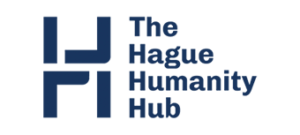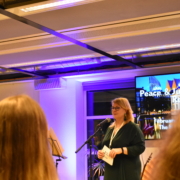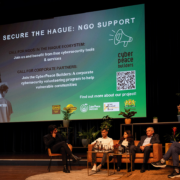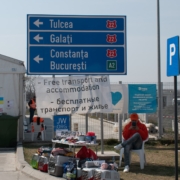Looking into People-Centred Justice with Dr. Maurits Barendrecht of HiiL: “What do people need from the law, in place of what does the law need from people”
People-Centred Justice, the subject of the next peace&justice café on June 8, is a simple idea with plenty of nuance: legal systems should be based on the needs of the people that use them. But how can you ‘innovate’ law? And what might it mean for the justice system? We spoke to Dr. Maurits Barendrecht, Research Director at The Hague Institute for the Innovation of Law (HiiL) to find out!
By Thomas Ansell
So, what is People-Centred Justice?
“What People-Centred Justice really means”, says Maurits, “is looking at the problem as people experience it, rather than looking at the law as a way to ‘solve’ a problem.” Naturally, it’s a little more complicated than that, with Maurits going on to explain that People-Centred Justice comes from a rich intellectual background that takes in social psychology, game theory, procedural justice research, dispute system design and the work behind Harvard’s Negotiation Project. But the basic thinking behind efforts to create a more People-Centred Justice system tend to revolve around centring the ‘user’ (or citizen) within a justice system, and building new methods and programmes that can help facilitate this, based on what observably works.
“It’s good to begin by thinking about when people need the law; and that is often as an arbiter in a conflict”, says Maurits, “and ‘justice’ is what results as the most equitable solution.” At the moment, he adds, the law is most often looked at as the object of enquiry, rather than the people it affects. This means that when we think about how to improve a justice system, we should remember that most people, are looking for a solution to their problems – a solution that is quick, easy to follow, and based on evidence.
A monopoly on justice
“If we are looking at ways to make the system serve people better”, says Maurits, “it may be good to look at ways to provide alternative routes to justice.” He adds that since the state and state legal system have a ‘monopoly on justice’ (ie. there is only one court system), having a “broader variety of solution suppliers could lead to better outcomes.” However, Maurits notes, “competition may not always be the solution, because two people in a conflict need to buy into the same system, and of course you need unified high standards.”
What this ‘monopoly on justice’ means in practice is that service levels drop due to an overloaded system: there is only one entrance into the justice system’s apparatus. “This also means really long processes and delays for users”, says Maurits, “in the Netherlands you only need to look at the toeslagenaffaire, or the approach to providing people in Groningen [affected by gas-extraction earthquakes] with compensation for their damages houses to see how these delays can play out in reality.”
Alternative, flexible, evidence-based methods
What Maurits would like to see, he says, is an approach to law that is similar to most countries approaches to medicine: another sector that makes big interventions in peoples lives. “What you have with medical developments, is that there is a theoretical phase, followed by testing in a lab, then small-scale studies; and finally a rollout to the mass market, with safeguards in place.” This means that the latest advances in medical research make it into use as a drug or therapy as quickly as possible.
There are other parallels with the medical research sector, too, that Maurits identifies: “in the medical sector in particular there is a progressive approach to RnD; there is a collective approach that there must always be research and a need to find new routes and pathways. The approach in the justice sector is often that the system exists as it is, and that new laws are enough to deal with issues.”
Looking to the future
“People-Centred Justice is really gaining ground as a way of thinking”, says Maurits, “with even the Dutch Prime Minister Mark Rutte referring to solutions that people need to move on with their livesi. It’s a strong movement, but part of the challenge is educating people that work in law about research and development – that writing more laws isn’t necessarily the response that gives people the best outcomes.”
Dr. Maurits Barendrecht is the Research Director of The Hague Institute for the Innovation of Law, and a Professor at Tilburg Law School. Our thanks to him for his answers and assistance in putting together this piece. The Hague Humanity Hub and HiiL are part of a consortium of over 30 organisations looking into alternate conflict resolution methods in the Netherlands, for more information on the project, check out the HiiL website, or join the session on the project at the next peace&justice café!
Image by Arek Socha from Pixabay









